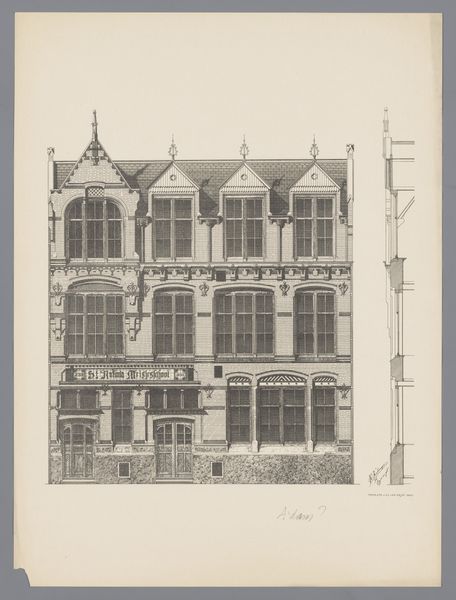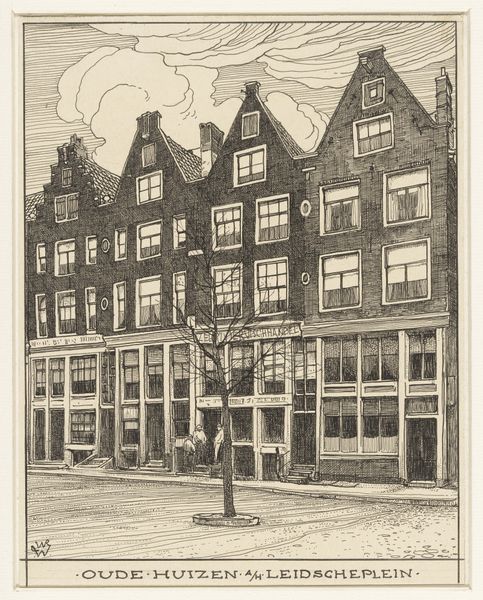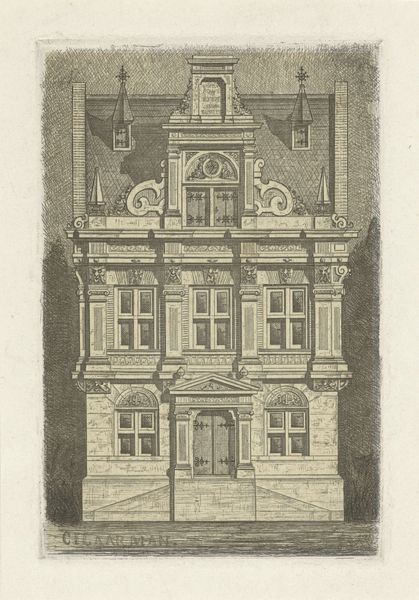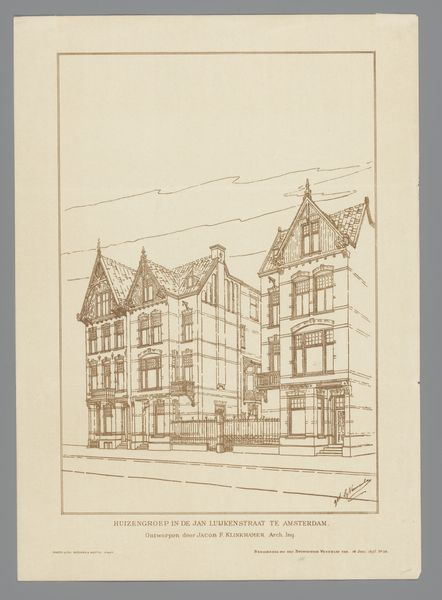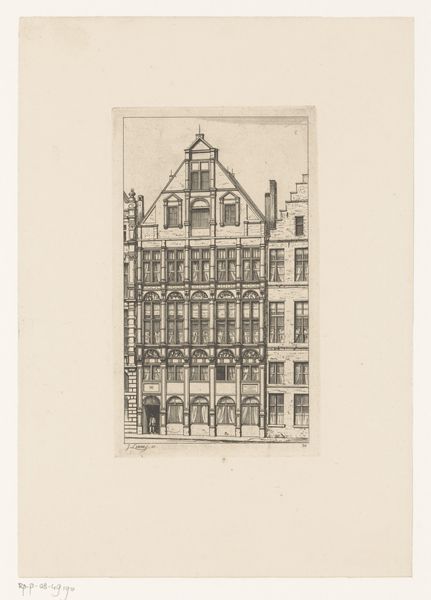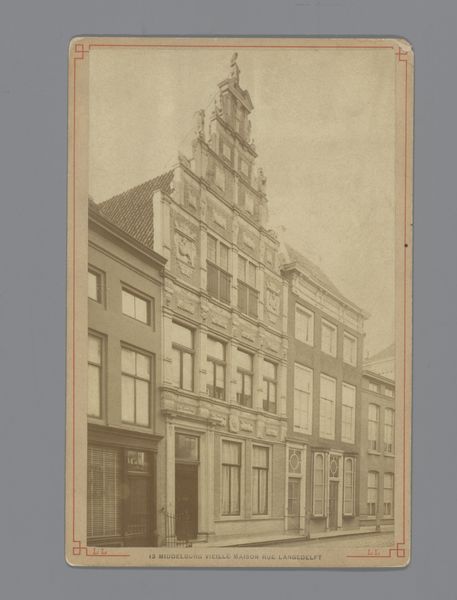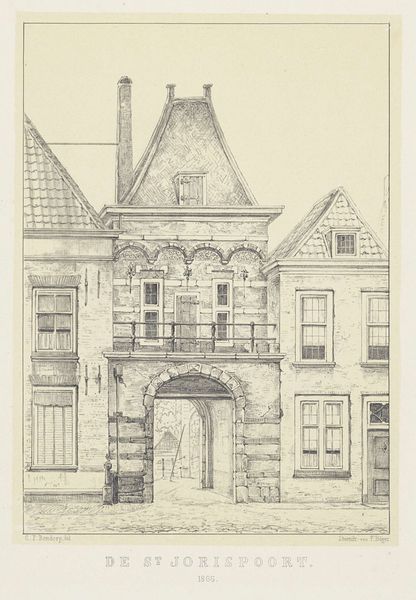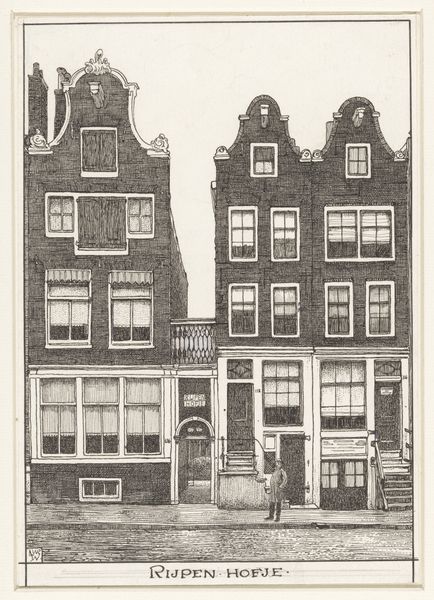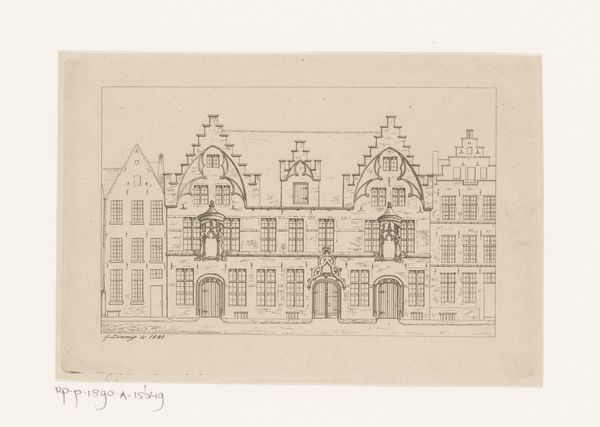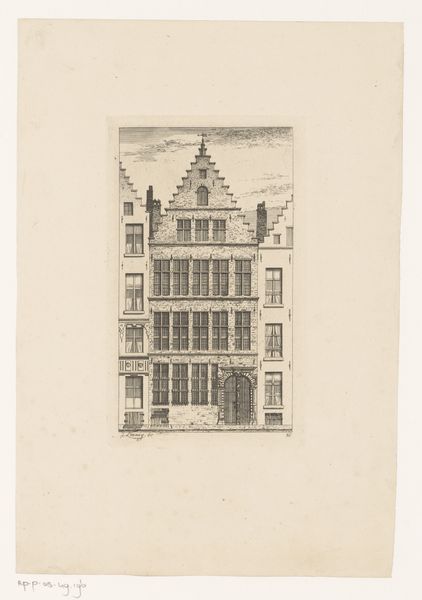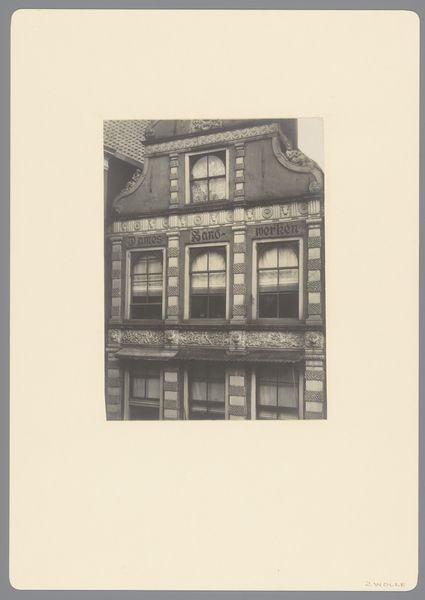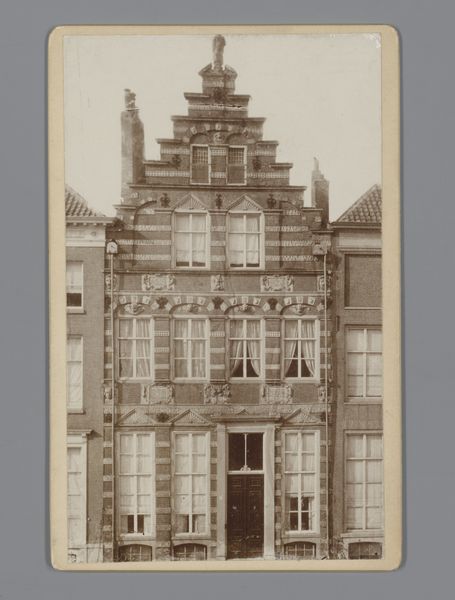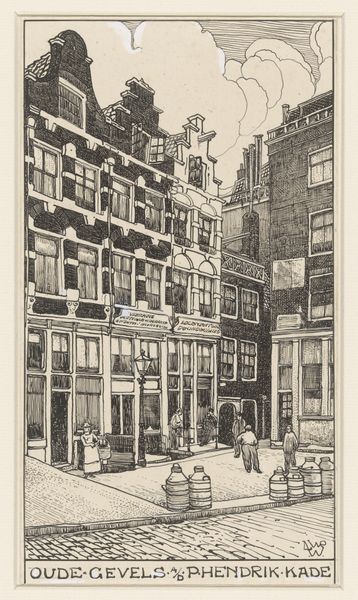
drawing, paper, pencil, architecture
#
drawing
#
paper
#
pencil
#
architectural drawing
#
architecture drawing
#
cityscape
#
architecture
#
realism
Dimensions: height 358 mm, width 251 mm
Copyright: Rijks Museum: Open Domain
Curator: This drawing from 1893 is entitled "Façade Designs in the Grote Houtstraat in Haarlem." Editor: There’s an impressive precision at play; it’s rendered in delicate lines, but it gives off a surprisingly monumental feel. The buildings' frontages are facing us in detailed monochrome. Curator: Indeed. I find myself contemplating the societal implications of architecture in the late 19th century. Notice how the differing facades, while sharing an aesthetic language, perhaps subtly indicate class or commercial distinctions along this important street. Editor: I see what you mean. The varied gables especially indicate differences, yet there's a binding harmony. Note the artist's clever manipulation of line and shading; he articulates architectural details—the windowsills, the cornices, the decorative brickwork—to create a compelling sense of depth on a two-dimensional plane. It’s almost photographic. Curator: What strikes me is that the artist presents these buildings devoid of people. Their absences feel loud here. We’re forced to think about who occupied these spaces and the socio-economic implications. It begs the question of urban development. Was this a utopian vision or a critique? Editor: Interesting point. Although stark, that's the drawing's power—that capacity to make you reflect on history, memory and social identity simply through line, form, and meticulous design. Curator: Agreed. The drawing feels inherently radical. Consider the urban planning discussions happening now concerning space, property ownership, and equity. I wonder how this image may provoke conversations regarding the ongoing negotiation of space in our communities. Editor: It does. By documenting something so inherently part of our daily lives like this, it compels us to observe our everyday from new and valuable vantage points. Curator: Absolutely, thank you. The ability of a historical document to hold relevance underscores art's pivotal contribution to wider social dialogue. Editor: The drawing’s formal strengths ultimately allow it to achieve precisely this kind of sustained significance, prompting continuous engagement from one era to the next.
Comments
No comments
Be the first to comment and join the conversation on the ultimate creative platform.
